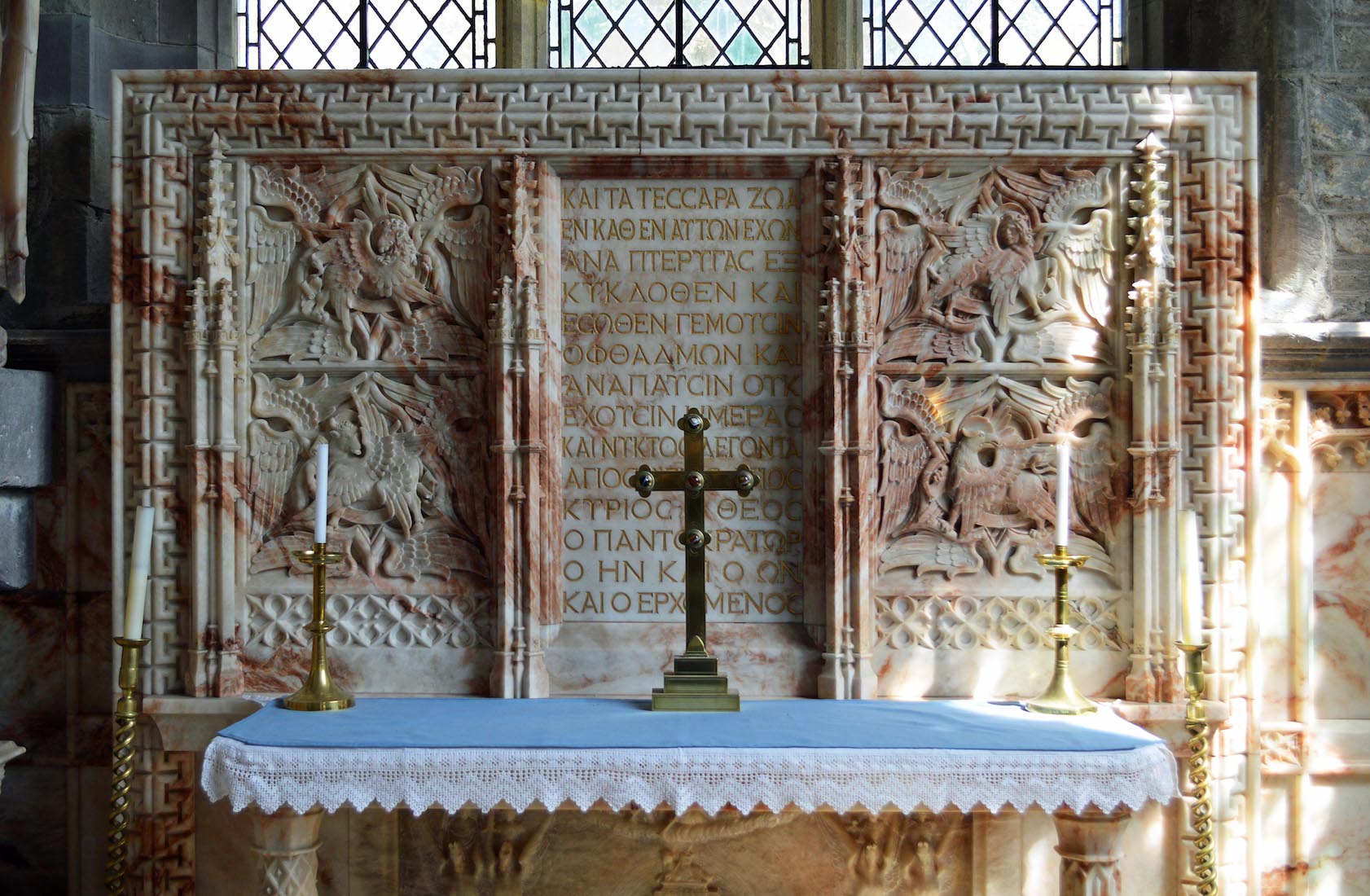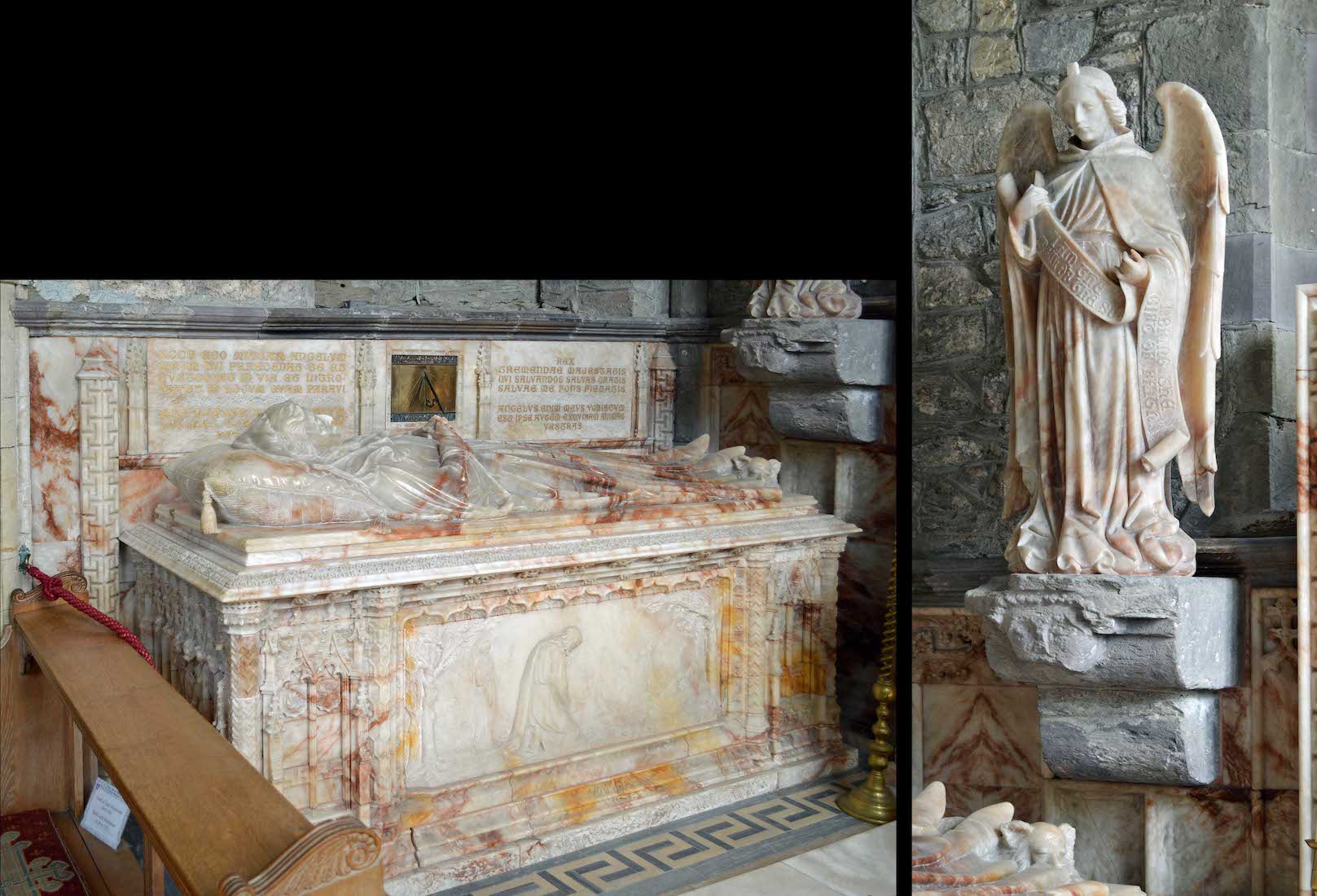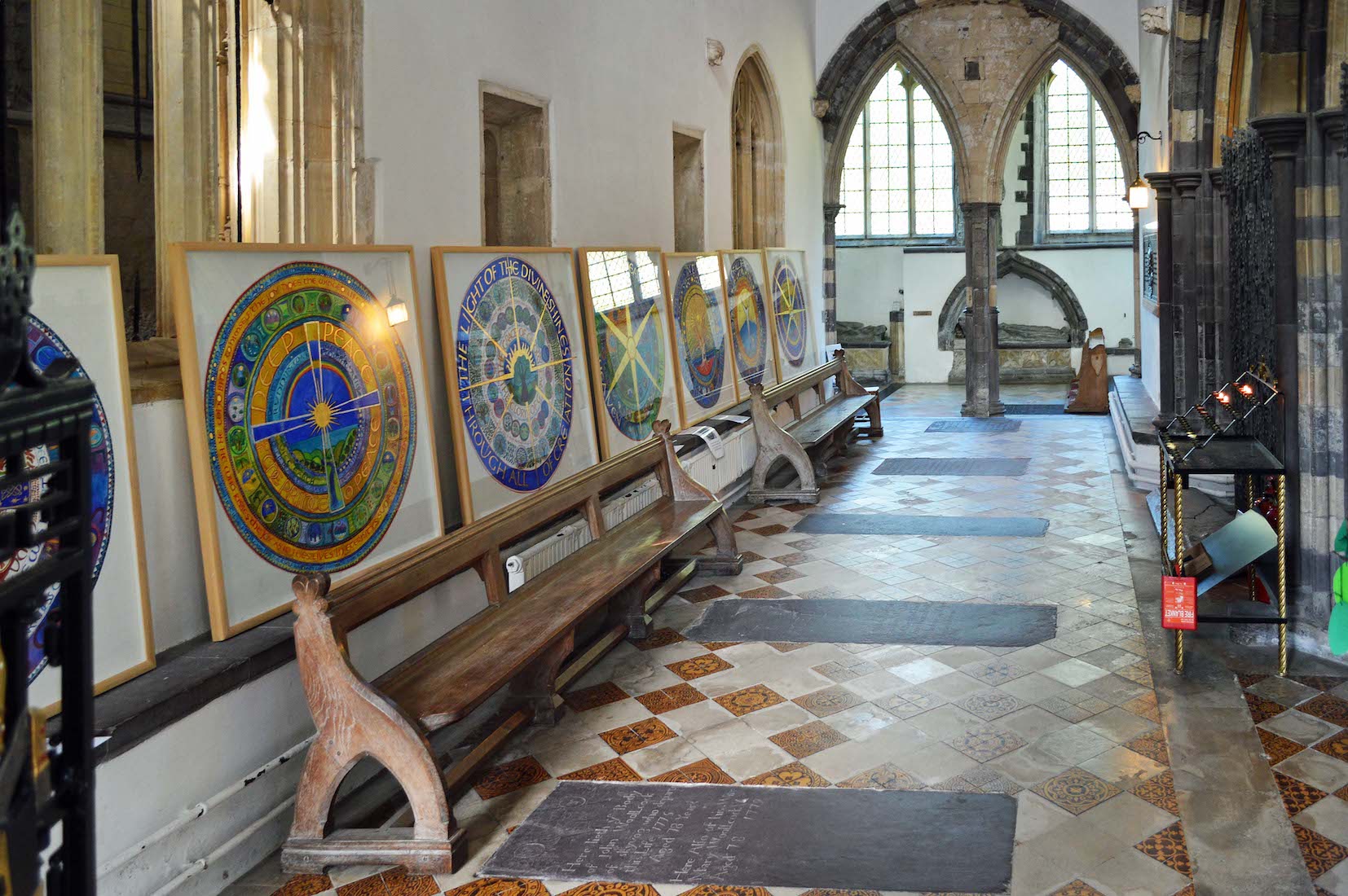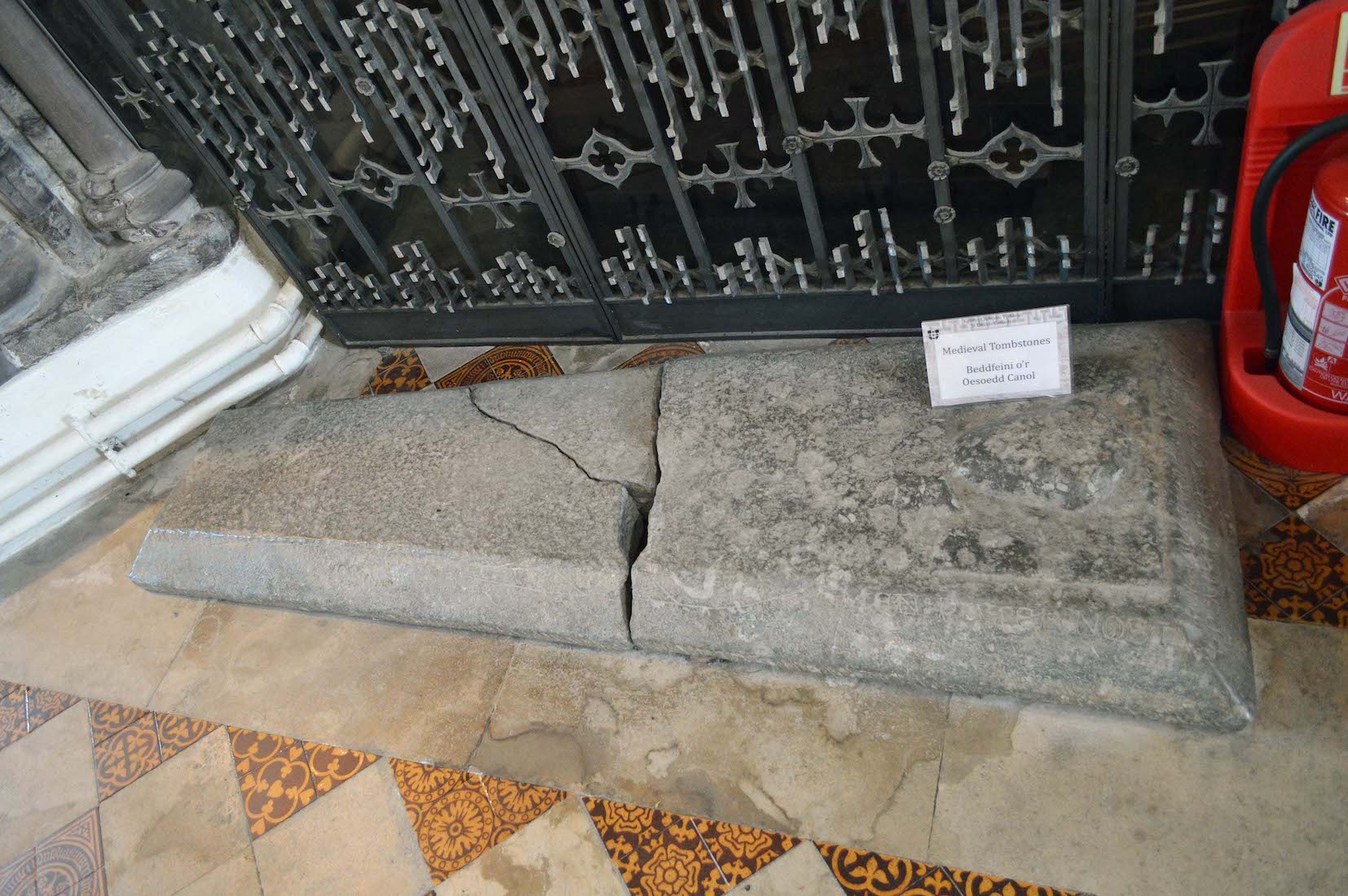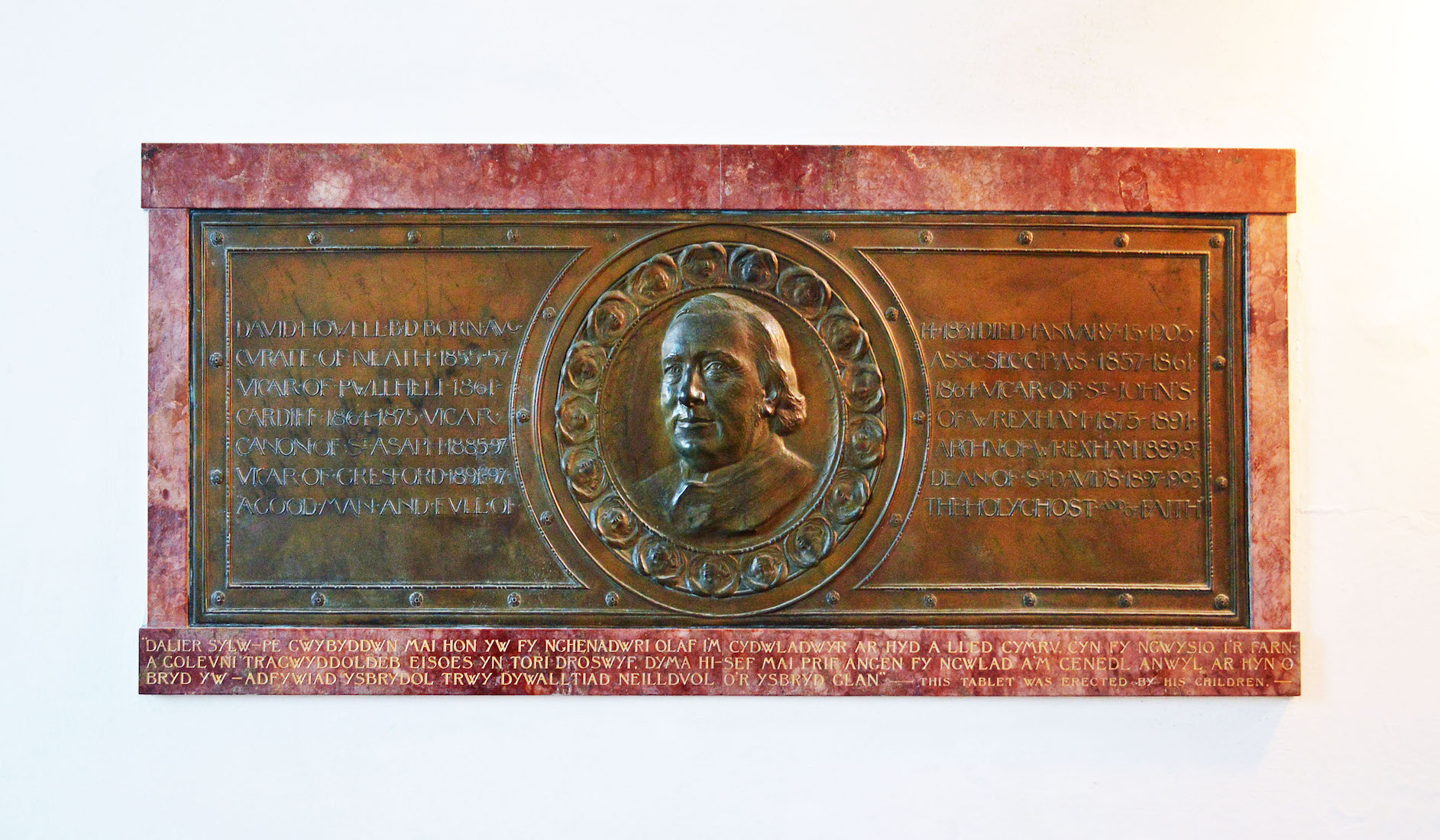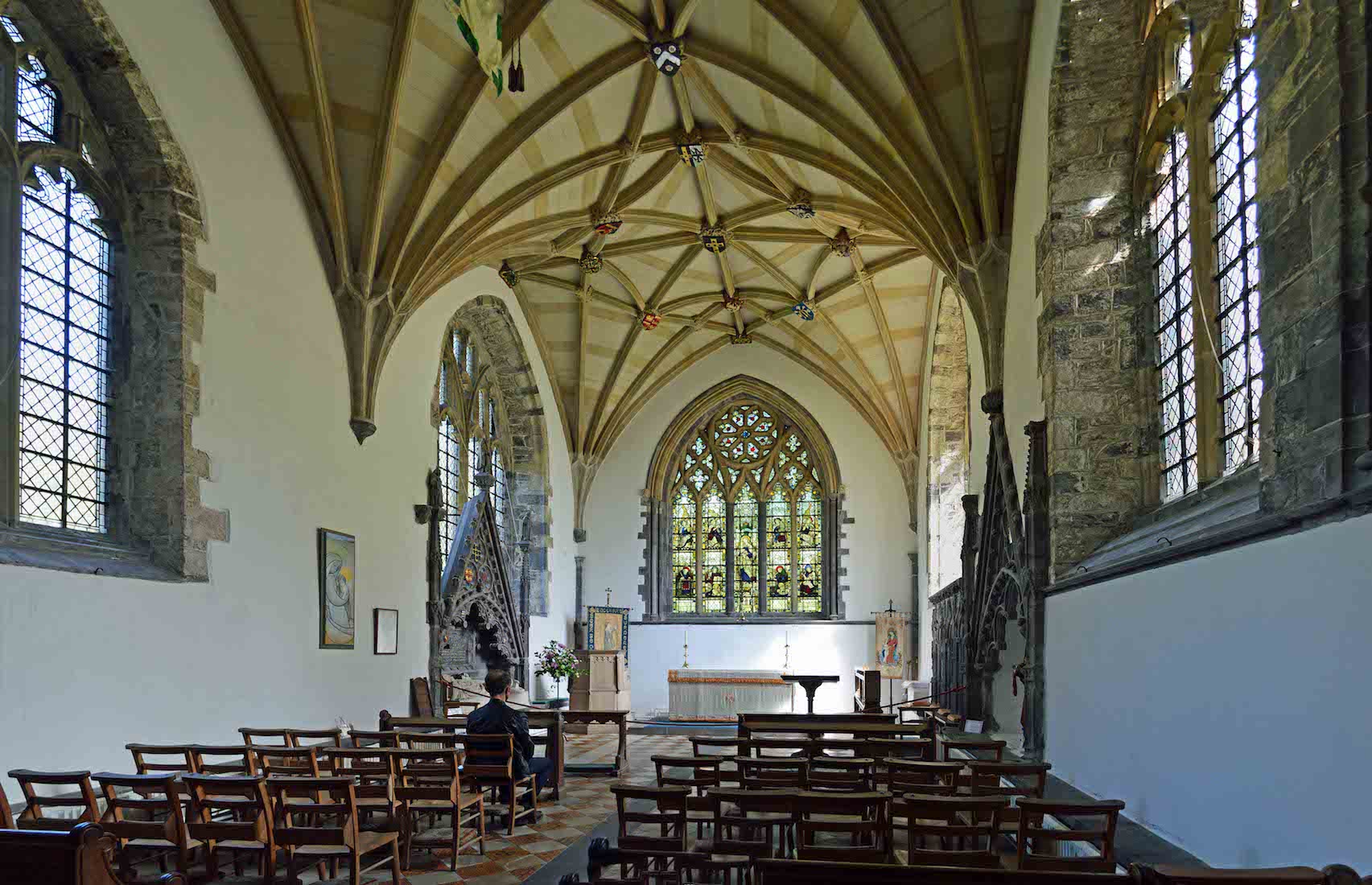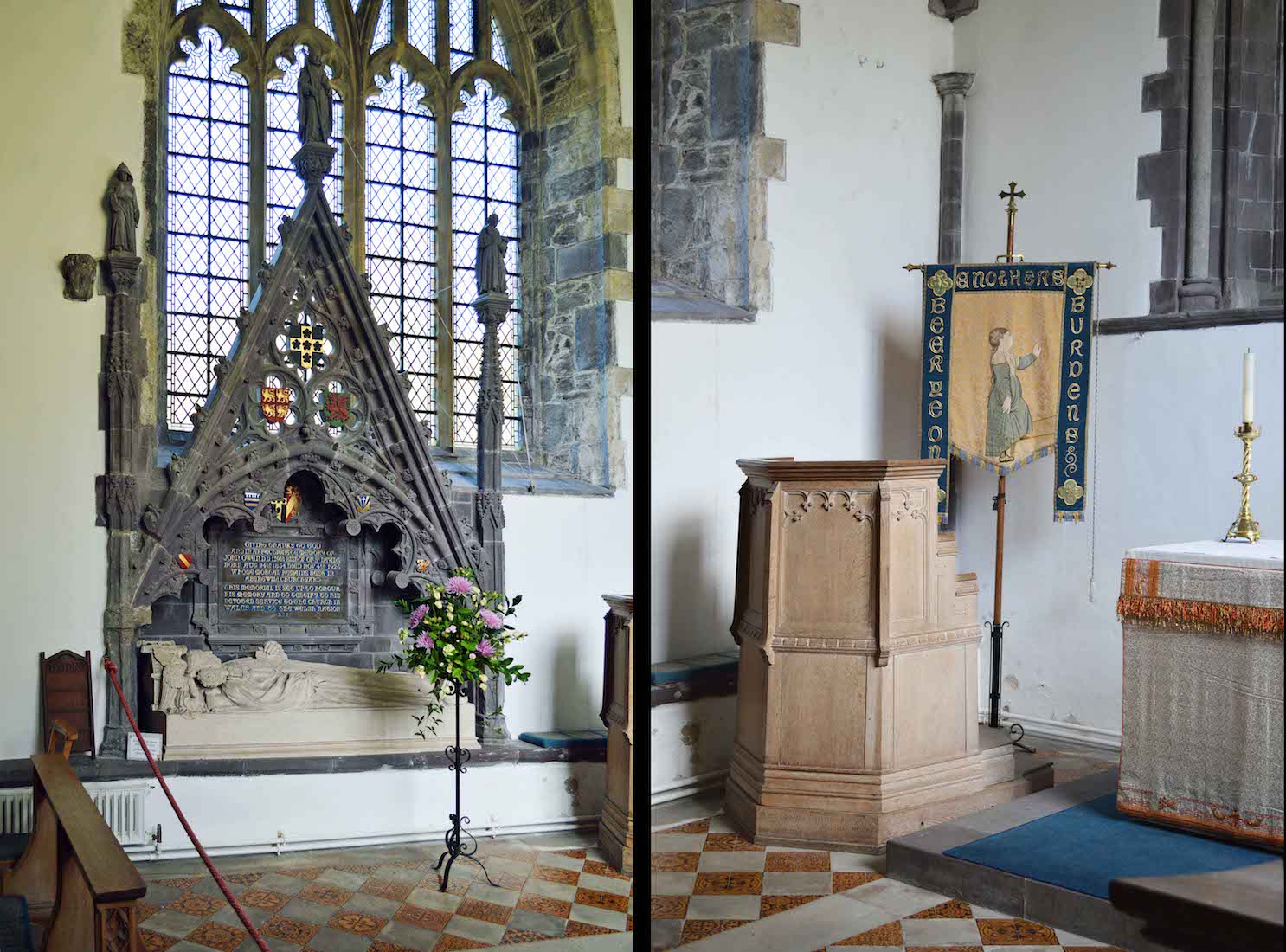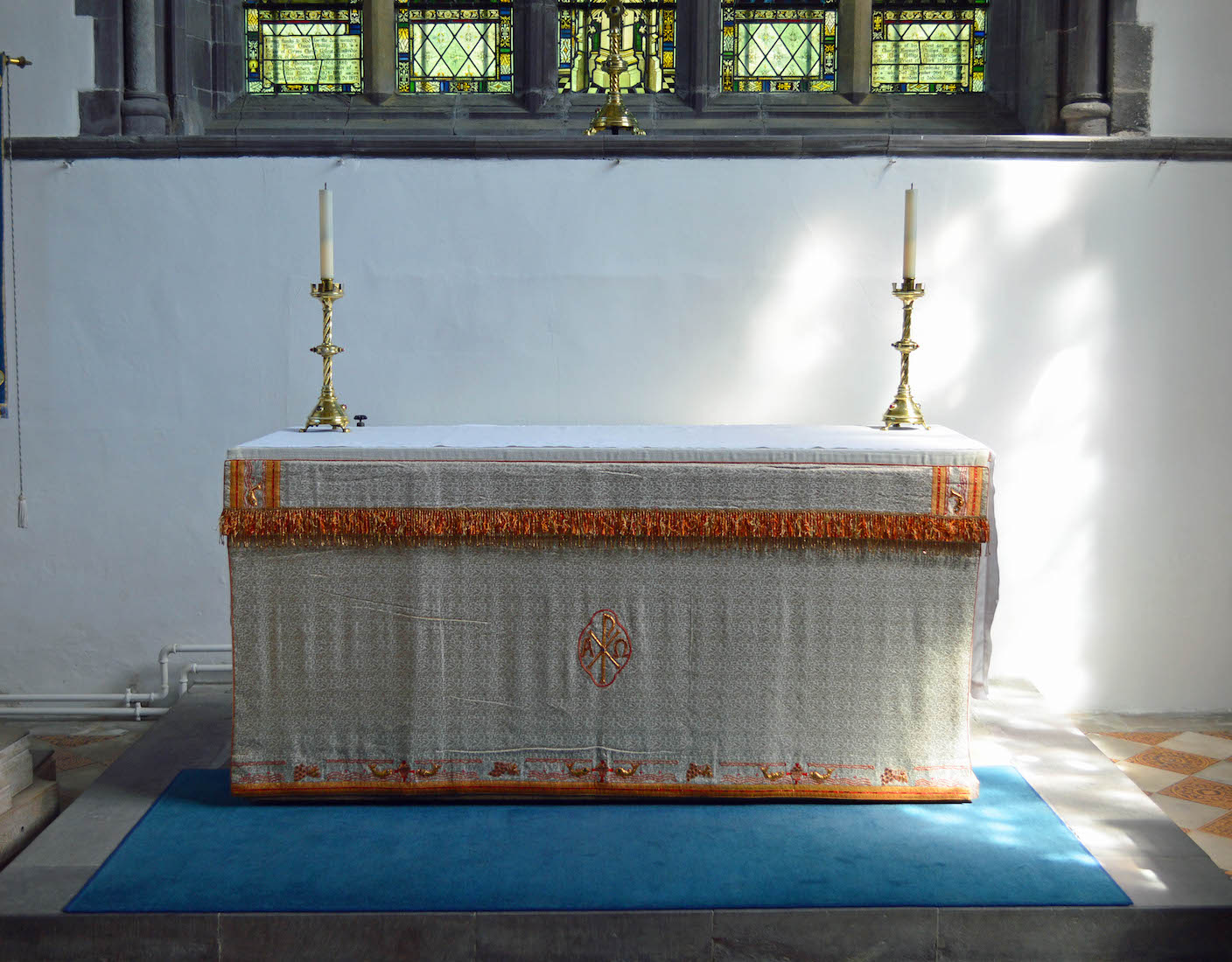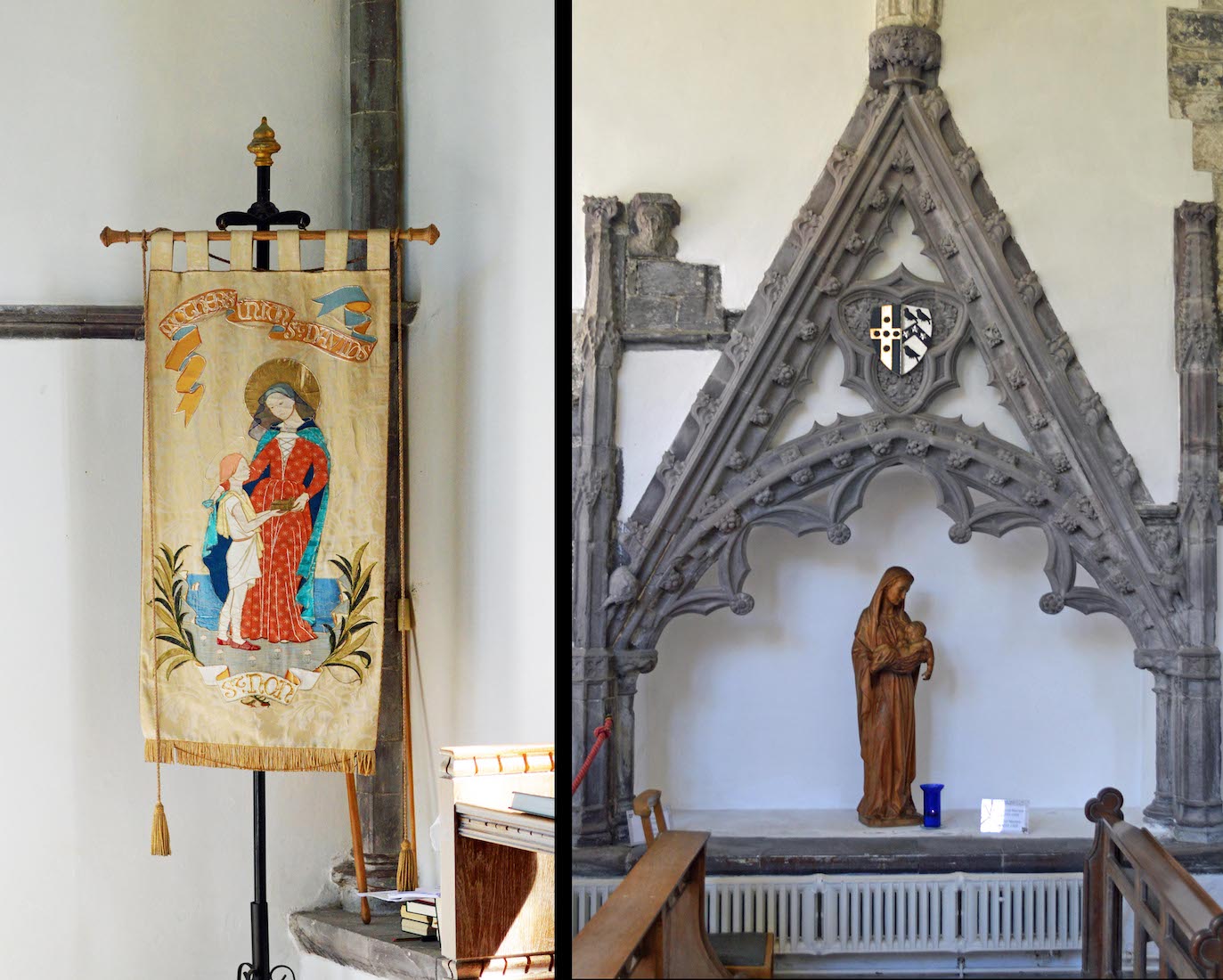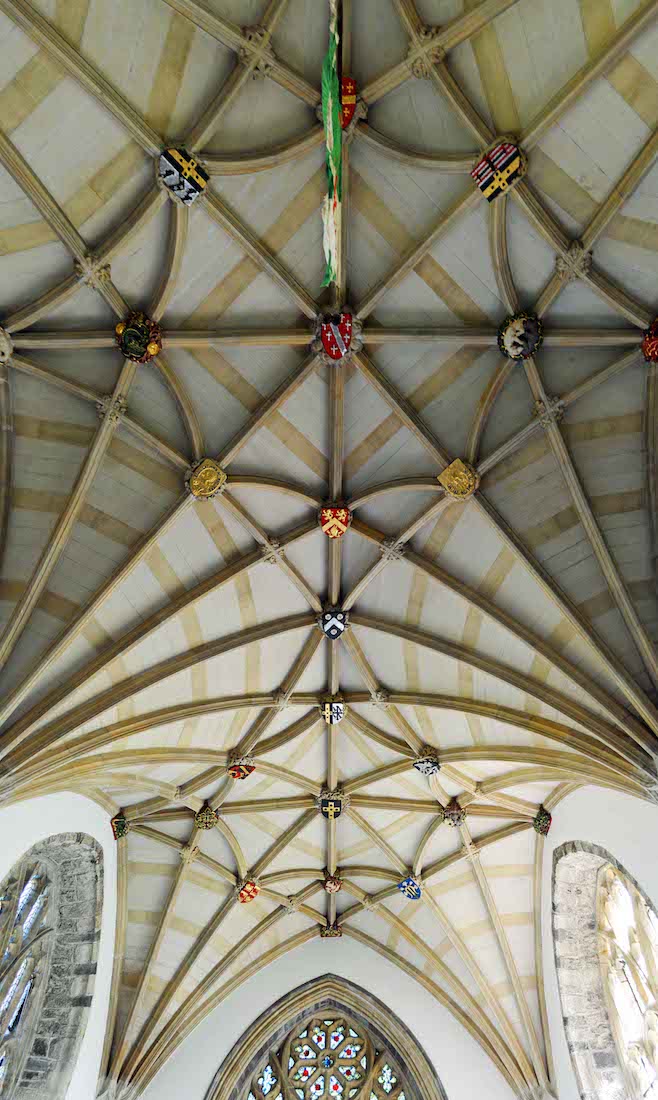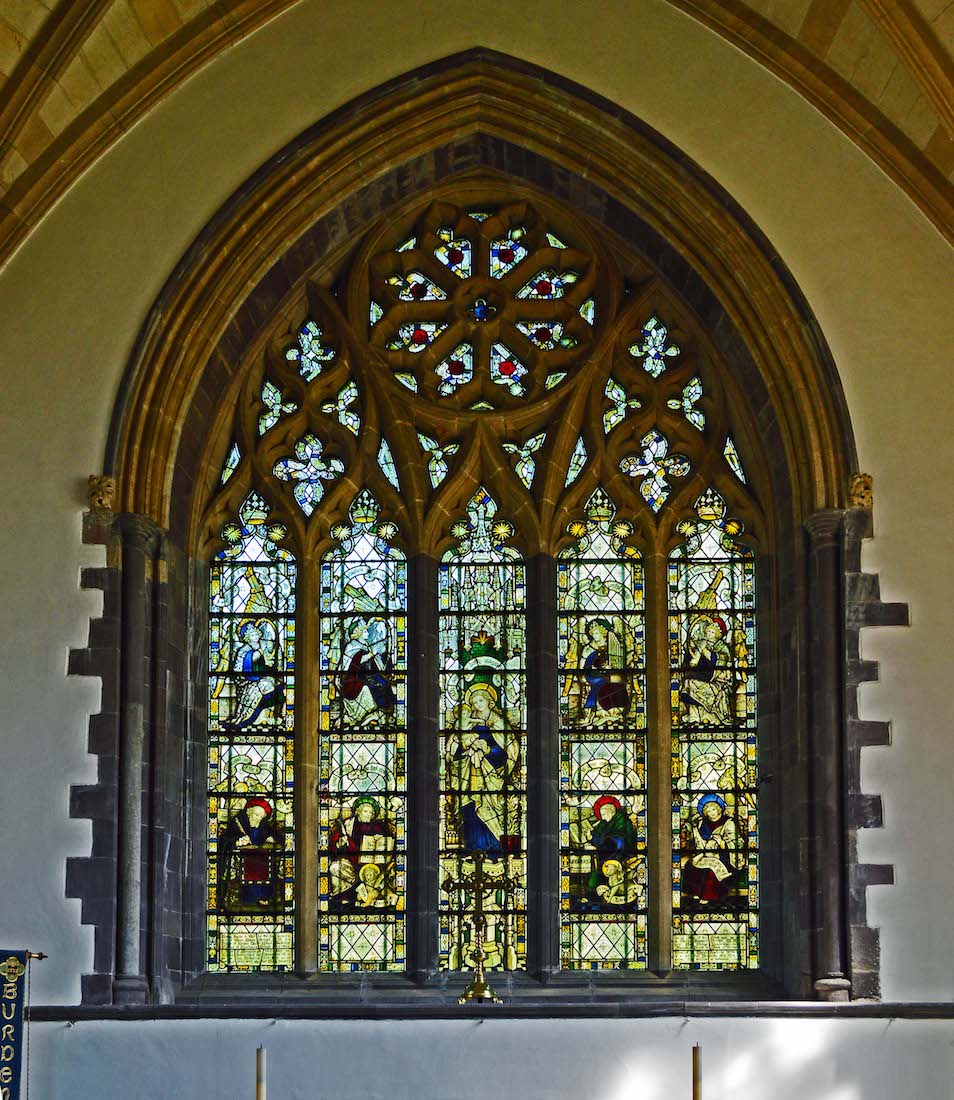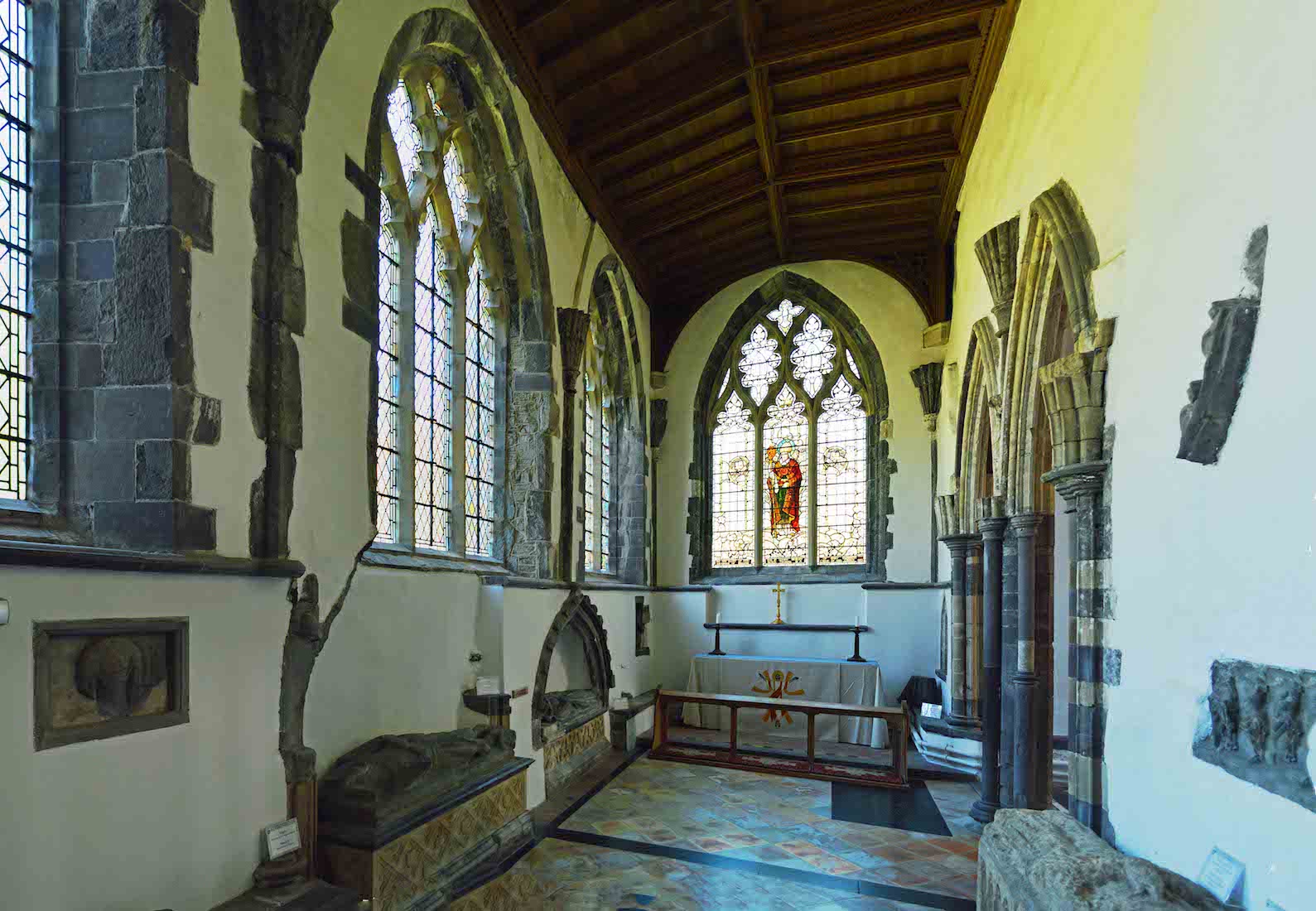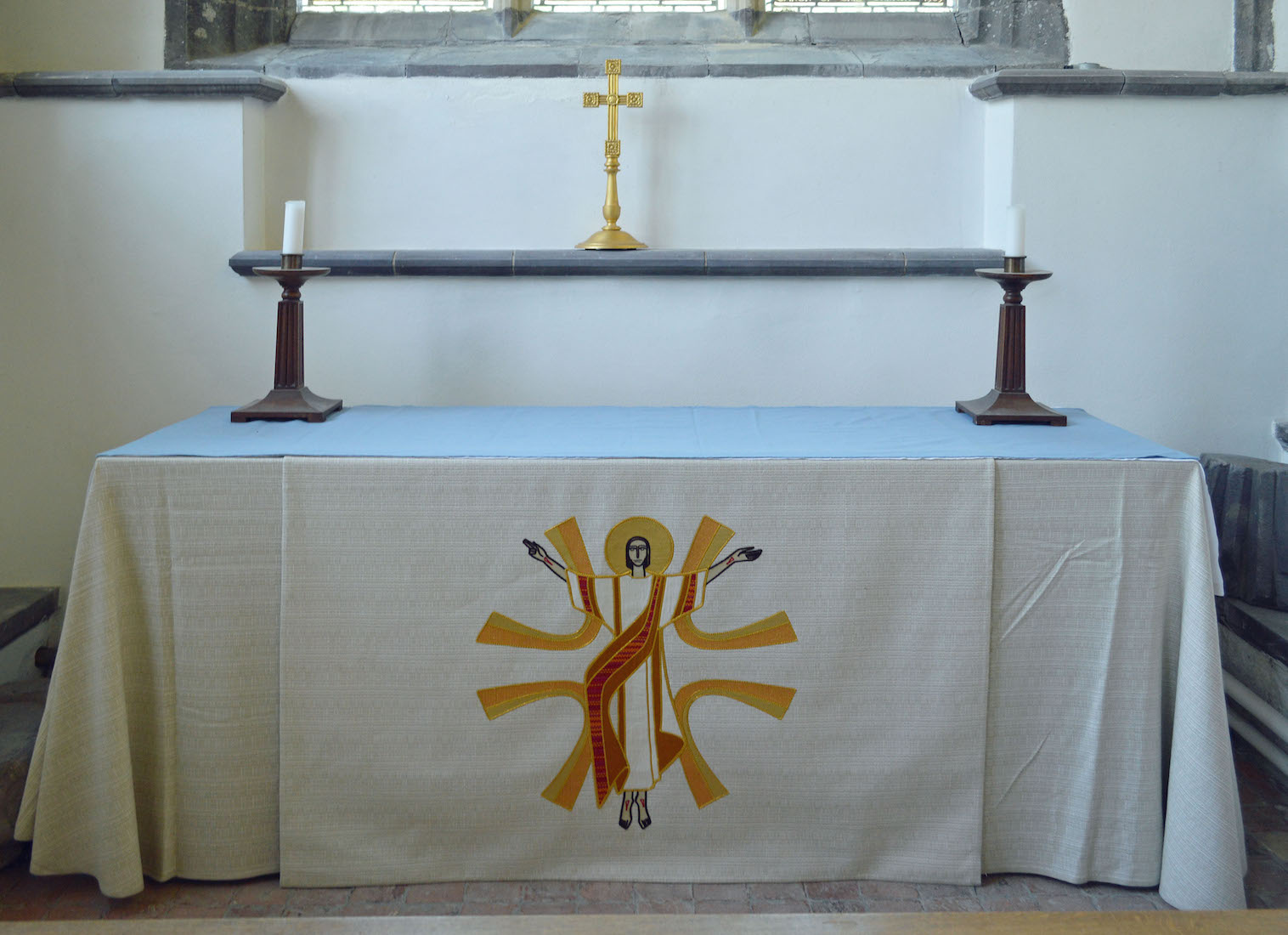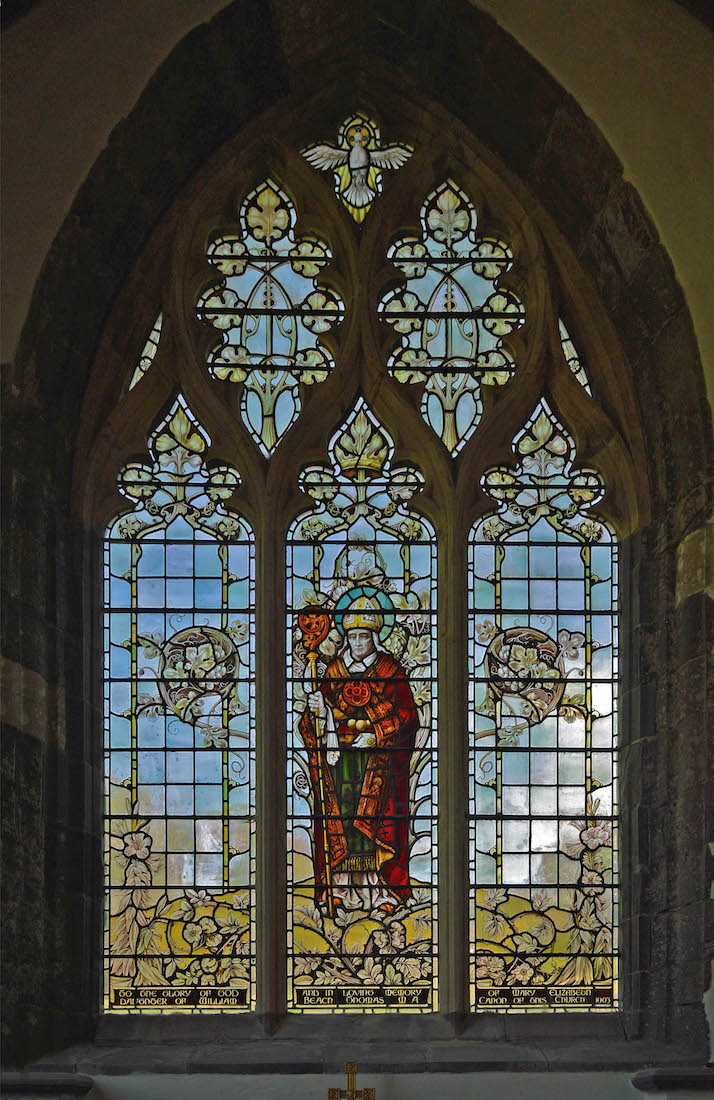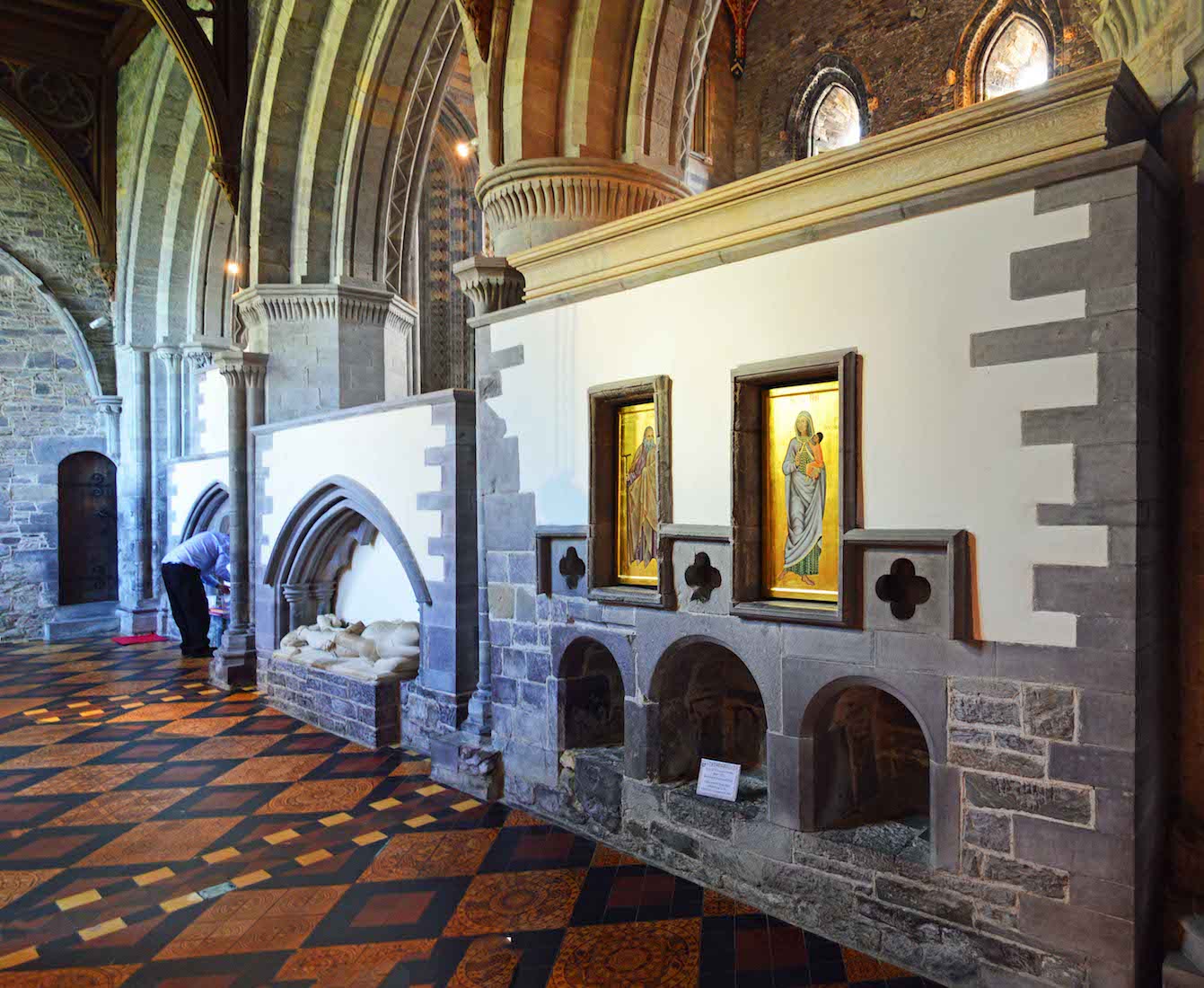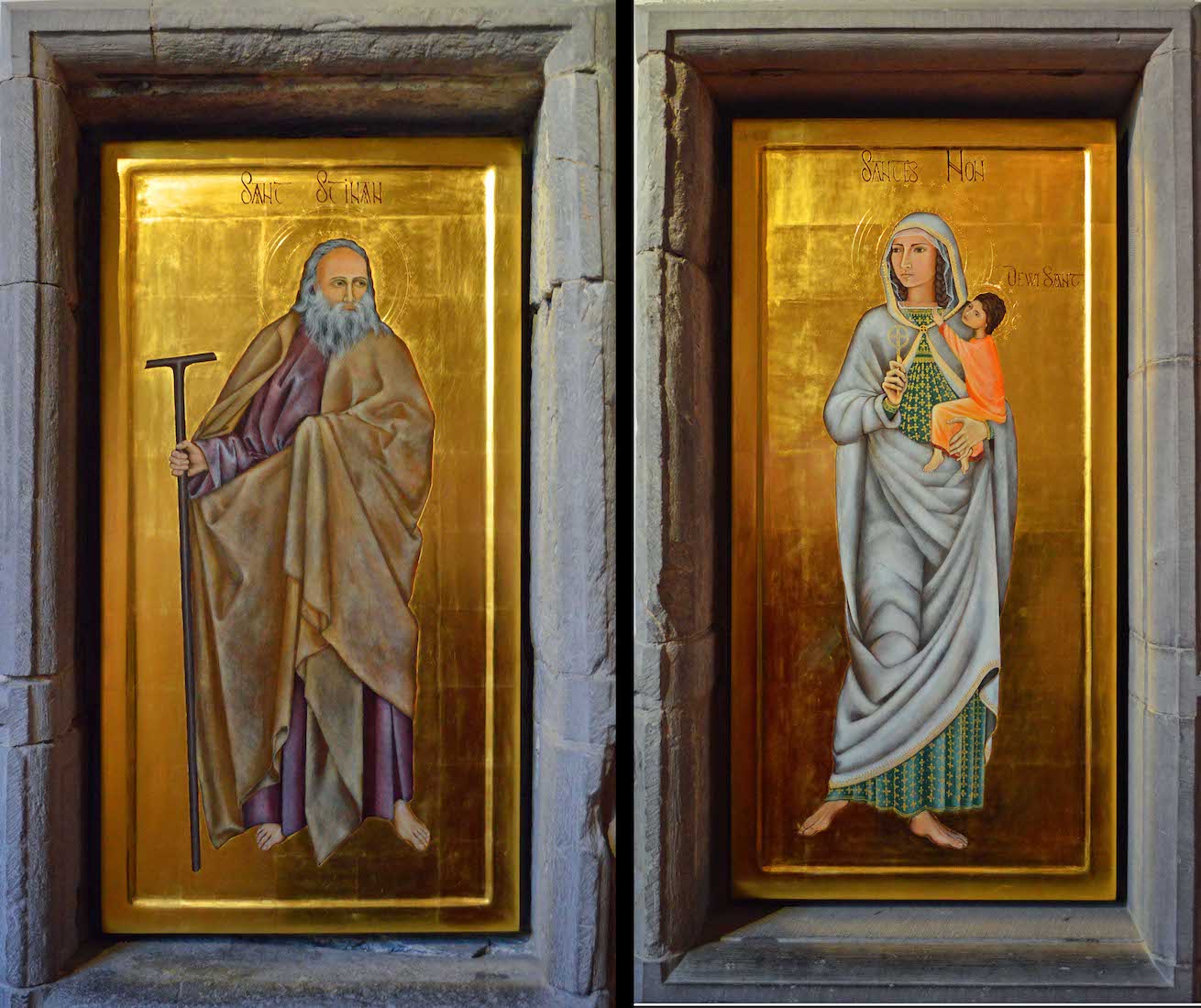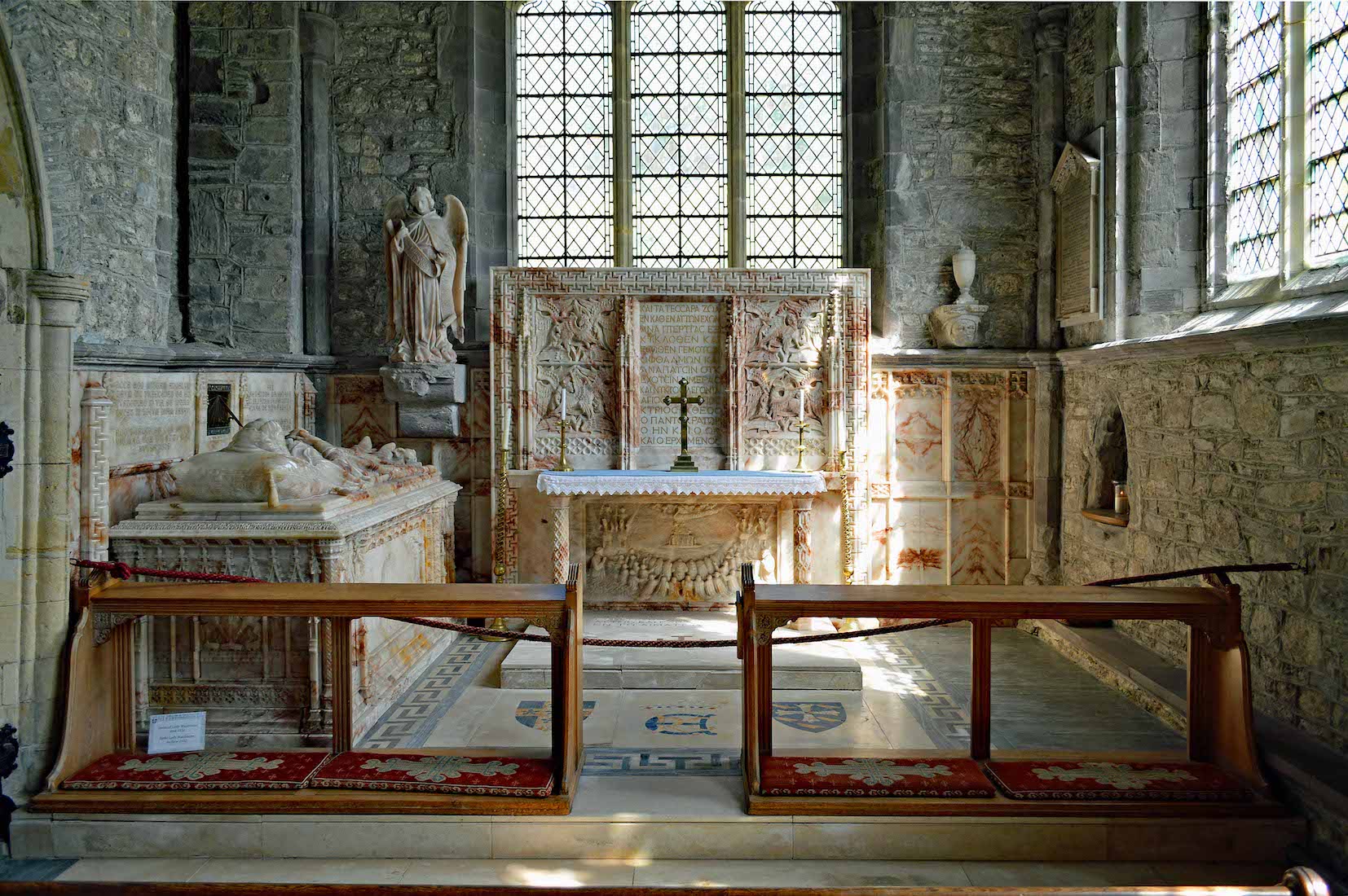
This chapel is dedicated to St Edward the Confessor who was among the last Anglo-Saxon kings of England. Usually considered the last king of the House of Wessex, he ruled from 1042 to 1066. Edward was the son of Æthelred the Unready and Emma of Normandy. The chapel has an attractive altar, and at left is an effigy with a watching angel.
82. CHAPEL FLOOR
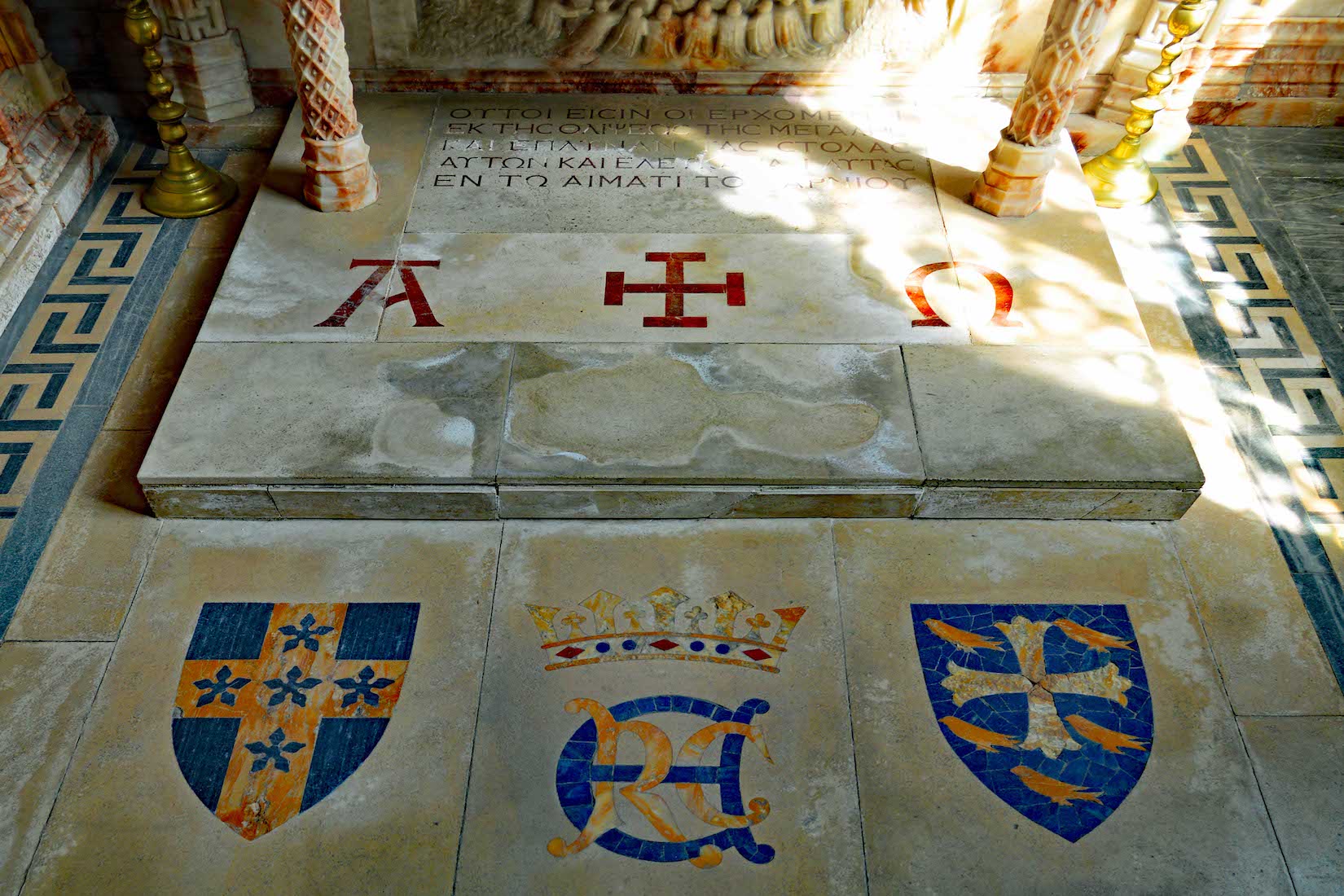
There are various symbols on the chapel floor in front of the altar. The cross with five gold birds was the coat of arms of Edward the Confessor.
83. ALTAR AND REREDOS
The altar and reredos are constructed of alabaster. The reredos incorporates fhe symbols of the Four Evangelists: stylized carvings of a lion, ox, angel and eagle
84. EFFIGY AND ANGEL
The Chapel of St Edward the Confessor was re-roofed in the early part of the twentieth century. It had fallen into disrepair after Parliamentary soldiers were ordered to strip the lead from the Cathedral roof in 1648. The chapel is the resting place of the Viscountess of Maidstone who funded the restoration of the South aisle and chapel.
85. EAST AMBULATORY
The East ambulatory runs across between the Lady Chapel and the Chapel of the Holy Trinity. During my visit, there was some exhibition being held here. The floor of the ambulatory is regularly laid tombstones with diagonal tiling between. The entry to the Lady Chapel is just on our right here, but first we notice some cracked stonework just beyond the table on the right, and a plaque on the wall beyond.
86. MEDIEVAL TOMBSTONE
This is an unnamed medieval tombstone ... . It seems a shame to live a useful life, and then not be remembered by an anonymous broken slab!
87. HOWELL PLAQUE
The memorial plaque remembers David Howell (1831 – 1903), and lists his various positions. We notice he served at St Asaph and Wrexham before becoming Dean of St Davids (1897 – 1903).
88. LADY CHAPEL
We enter the Lady Chapel – relatively plain, as Lady Chapels go! There is in fact a small organ in the corner at our left. Ahead is the altar and East window, with an effigy and pulpit to the left and a banner to the right. The decorative arch on the right wall holds a small statue. We notice the vaulted roof with the brightly painted bosses.
89. CHAPEL ORGAN
The Lady Chapel is separated from the ambulatory by a wrought iron screen, and in the corner is a small organ available for chapel services.
90. OWEN EFFIGY, PULPIT
A simple pulpit stands in the corner near the altar, and a Mothers’ Union Banner. The effigy is for Bishop Owen. John Owen (1854 – 1926) was the Professor of Welsh at the St Davids College, as well as the Dean of St Asaph. He became the Bishop of St Davids in 1897. Much of Owen’s episcopate was marked by controversy and he was not afraid of confrontation. He led the Church in Wales through the difficult disestablishment and become regarded as spokesman for the Welsh church during this time.
91. LADY CHAPEL ALTAR
The simple altar has a frontal bearing the traditional Alpha, Omega and Chi-Rho symbols for Christ. Cathedral chapels tend to be used frequently, especially when smaller congregations are involved. Here the Cathedral’s Welsh congregation meets for Sunday worship.
92. BANNER AND STATUE
Anoher Mothers’ Union banner stands to the right of the altar: this one shows St David as a boy with his mother – traditionally, St Non. An attractive statue of Mary holding the baby Jesus stands in the arch on the right wall.
93. LADY CHAPEL VAULTING
The Lady Chapel has a long history, being first completed in the 14th century. It was later remodeled by Bishop Vaughan but the vaulted roof collapsed in 1773 due to the ravages of Cromwell’s men. It was restored in 1901 by Gilbert Scott’s son, Oldrid. Several of the surviving roof bosses are 16th century.
94. GREAT EAST WINDOW
This five light window from the C. E. Kempe studio (1924) shows the Virgin and Child with musical angels and the Four Evangelists.
95. NORTH CHOIR AISLE
We leave the Lady Chapel and cross to the North choir aisle. At its East end, this leads to the St Nicholas Chapel. We notice the effigies against the North wall, and some unfortunate structural damage.
96. ST NICHOLAS CHAPEL ALTAR
A simple gold cross stands behind the chapel altar, the altar frontal depicting the Risen Christ. Saint Nicholas of Myra (traditionally 270 – 343 was an early Christian bishop of the ancient Greek maritime city of Myra in Asia Minor during the time of the Roman Empire. He is the patron saint of sailors, merchants, archers, repentant thieves, prostitutes, children, brewers, pawnbrokers, and students. His legendary habit of secret gift giving gave rise to the traditional model of Santa Claus (‘Saint Nick’) through Sinterklaas. There is no recorded Welsh connection!
97. CHAPEL EAST WINDOW
One would have to assume that the chapel window portrays St Nicholas, Bishop of Myra!
98. NORTH CHOIR AISLE EFFIGIES
At right is the tomb of an unknown priest. The two effigies at left are described as effigies of knights who were of the Wogan family. The Wogan family had many branches, but Sir John Wogan (died 1321) and his descendents occupied Picton Castle in Haverfordwest near St Davids.
99. SOUTH WALL OF AISLE
If we turn to the other (South) side of this aisle we find a couple more effigies, and also the rear of the St David shrine.
100. REAR FIGURES OF SHRINE
The figures shown here at the rear of the shrine are St Justinian and St David’s mother, St Non. During the 12th century, Pope Calixtus II declared St Davids a place of pilgrimage, and David’s shrine became a place to which hundreds of thousands of pilgrims flocked. All this ended precipitately with the destruction of the shrine in 1538 at the Dissolution of the Monasteries. • Close to St Davids is the reputed place where Non gave birth to Saint David. This is now named Capel Non, and is marked by the Chapel of St Non. Close to the ruins of this chapel is her holy well.


